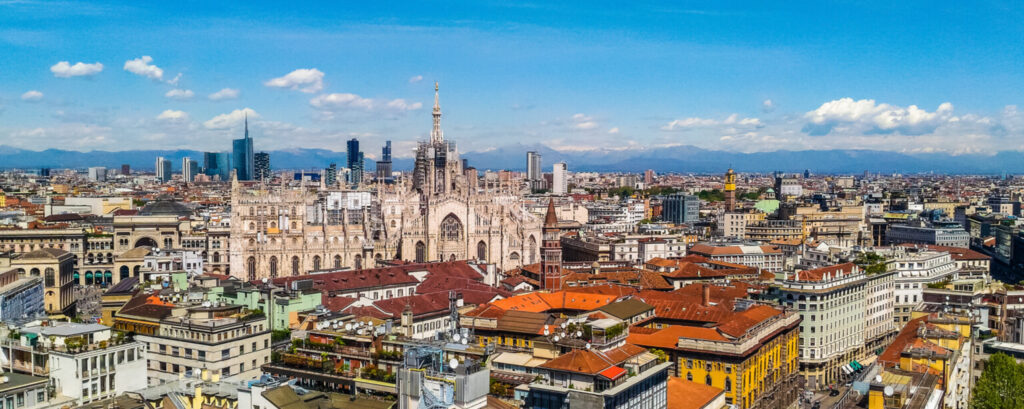Car-free cities are coming, but does this mean a total ban on cars? In most cases – no. Places adopting a car-free approach are merely emphasising the use of public transport or foot traffic over the use of cars. Across Europe and North America, many cities are also introducing a long-term plan to reduce vehicle usage over the next few years. Of course, there are some exceptions to this rule, such as Venice and Tempe.
So, if you’re moving away for work, retirement or just a change of scenery, having access to your car whilst you’re overseas can be incredibly convenient. At Keith Michaels, we want to ensure that you have all the details available ready for your travels.
Car-Free Cities in Europe
If you’re planning to take your car over to Europe, then you’ll need to know a few things before you go – most notably, how some places are implementing car-free spaces, and what it might mean for you.
1. Copenhagen, Denmark

Since the 1960s, Copenhagen has been a pioneer in embracing pedestrian and cyclist-only zones throughout the city. This shift in attitude sees many of its residents now commuting by bike, as the city is home to cycling routes that span over 190 miles. Its superhighway for cyclists stimulates greater manoeuvrability around points of interest, residences, and places of work.
Despite Copenhagen’s cycling-centric approach, there are other opportunities to use your car within the capital city, as well as across Denmark. Copenhagen’s streets provide spaciousness, whilst also offering roadside or allocated parking at a cost.
As you drive closer to the centre of Copenhagen, you’ll find that parking can be quite an expensive task. This is another reason why cycling or walking is the main mode of transport within the city. Denmark also has strict rules on registering a car within the country, so it’s important to research this before going.
2. Milan, Italy

As well as being the fashion capital of the world, Milan has the second densest population in Italy. Its vibrant culture and lively atmosphere make it a hive of activity.
Although driving is one of the best ways to navigate Milan, residents that would previously utilise a car to commute to work are now offered the chance to leave their car at home during the weekdays. Citizens that choose to do this can benefit from vouchers worth €1.50, which are redeemable on public transport.
Similar to other cities, Milan limits access to parts of its town by way of marked Congestion Charge areas. To enter at varying times during weekdays, drivers will need to purchase an entrance ticket for every day that they intend to drive in the affected zones. When these ZTL (Zona Traffico Limitato) zones are active, it’s recommended to avoid driving through them. However, you can still access the area if the charge has been paid prior to entry.
3. Hamburg, Germany

With ambitious plans to become completely car-free by 2034, Hamburg is planning a series of measures that will see road traffic significantly diminished. Over the course of the next decade, a green network will be developed to make around 40% of Hamburg exclusively accessible for foot traffic.
Unlike other German cities, Hamburg hasn’t adopted the expansive green environmental zones that restrict certain vehicles from accessing its streets. Instead, there are only two streets affected by the Diesel Euro 6 low emission zone, and an emissions sticker is not required when driving in the city. A sticker is legally required for other areas in Germany, so it’s safer to have it displayed on your car.
With Hamburg’s aim to revaluate its cycle paths and pedestrianised areas, you’ll find more plans announced over the coming years that will affect access in and around the city. For now, it’s convenient to drive a car, and parking can be inexpensive in many sectors.
4. Madrid, Spain

By 2025, Madrid plans to completely rid its streets of diesel cars and vans. In another bold move, only fully electric vehicles have total freedom to drive around the downtown area. Even alternative fuel vehicles and more modern vehicles will be restricted to park for only 2 hours within the area. The city aims to increase space by reducing the number of lorries and managing the flow of traffic through its streets.
Madrid’s Low Emission Zone is gradually expanding as well, affecting any vehicle registered outside of Madrid’s district. Eventually, these zones will start to affect residents. It is also compulsory for cars to display an environmental sticker. As the city has banned all non-residents from driving in the city centre, there is more focus on using public transport or navigating the city by bicycle.
5. Venice, Italy

The historic city of Venice has its reasons for being car-free – namely its fragile architecture and canal systems. Almost entirely unspoiled by automobiles, the city’s infrastructure is not able to support the weight and bulk of traffic that many other places are acclimatised to.
In fact, attempting to drive in Venice is illegal. Of course, it’s possible to leave your car just outside the city, but it will cost a hefty price.
Other car-free cities in Europe
With European cities, like Copenhagen and Hamburg, setting examples worldwide, many places are now introducing ambitious plans in response to car-free campaigns. Many other cities, city centres and islands also adopt a car-free approach. These include:
- Brussels, Belgium
- Cardiff, United Kingdom
- Dubrovnik, Croatia
- Freiburg, Germany
- Galway, Ireland
- Ghent, Belgium
- Lindos, Greece
- Orvelte, Netherlands
- Sarajevo, Bosnia and Herzegovina
- Sark, Channel Islands
Car-Free Cities in the United States
As well as European cities, the idea of car-free zones is being adopted across North America. Joining townships in Virginia, Alaska and North Carolina, some of the most active and lively cities are exploring the potential that car-free spaces can offer.
1. New York, USA

Known as the city that never sleeps, New York is renowned for its lively atmosphere, iconicskyscrapers and dynamic culture. Whenever New Yorkers need to escape the hustle and bustle of city life, they can venture outside of Manhattan and unwind on either Governors Island or Fire Island.
As neither island host the infrastructure to support commuter vehicles, they can only be explored via foot or bicycle once you reach them. With proximity to these tranquil settings, Manhattan is starting to explore ways that it can also endorse aspects of car-free life.
Whilst Manhattan itself is a central hub of culture and business, there are plans to introduce car-free days in certain areas of the city during the holiday season. Currently, almost a quarter of Manhattan is occupied by roads or parking, whilst only 22% of households own a vehicle. If successful, this might see key commuter streets closed off to vehicles during intervals throughout the year.
2. Tempe, Arizona, USA

Located east of Phoenix, Tempe has built its very own community that does not support the infrastructure for driving. Residents in this neighbourhood are contractually obliged to navigate the area on foot and are forbidden from parking a vehicle within a quarter of a mile. In fact, most people moving to the area are not planning to keep their cars and will instead rely on subscriptions to car share programmes and scooting, as well as other forms of transport.
For those choosing to keep a car, parking might prove to be tricky as there is no access for vehicles into the community. Especially with downtown Phoenix approximately 20 minutes away by car, maintaining access to a vehicle might be necessary for longer trips across the state. However, Tempe has also sourced its own solution to this. Car share or ride share offers will give you access to almost instantaneous travel when you need it. Collection and drop-off points are also guaranteed to be no more than a 30 second walk away from your door.
3. Los Angeles, USA

It’s no surprise that the largest city within the state of California has set out its own plans to become car-free. By 2030, Los Angeles will seek to reduce car-related traffic throughout its city whilst increasing access for cyclists and pedestrians. LA will also emphasise cycling schemes, public transport options and car-share programmes. Inspired by Barcelona’s Superblocks, LA’s City Councilman aims to demonstrate that the city can be “pedestrian centric” and allow for “safer passage” on the streets.
With the Summer Olympics due to start in July 2028, officials are aiming to clean the air and give exclusive access to zero-emission commercial vehicles. In the grand scheme, a senate bill has targeted 2045 as a timestamp to eliminate carbon emissions in the city.
bill has targeted 2045 as a timestamp to eliminate carbon emissions in the city.
4. San Francisco, USA

Cities like San Francisco aren’t aiming to make cars obsolete; they’re trying to find ways to increase safety for their residents. As San Francisco is quite hilly, using a car is sometimes the best option to tackle the large inclines. On the flip side, San Francisco is notorious for poor traffic. This has led to considerations such as car-free zones and even congestion charges.
In a bid to ease traffic flow and free-up more parking spaces, certain segments within the downtown area may eventually implement a congestion charge during peak travel time.
If you’re looking into migrating out to the US, then we have some helpful tips and information to help you decide.
Other car-free cities in the USA
In the US, settlements similar to Tempe could be introduced if a further need is addressed for them. America, being a larger and newer country, has been built around being able to travel long distances in a shorter space of time.
However, some cities are still looking to try and reduce car usage, if not eradicate it in parts of the city. These include:
- Monhegan, Maine, USA
- Vail, Colorado, USA
Can We Help Insure Your Car When You Move Abroad?
Whether you choose to take your car with you, or leave it back in the UK, we can arrange an insurance policy that will suit your needs.
With more than 30 years’ experience, Keith Michaels will arrange an insurance policy for your car, wherever you are in the world.
Learn more about our expat car insurance.


